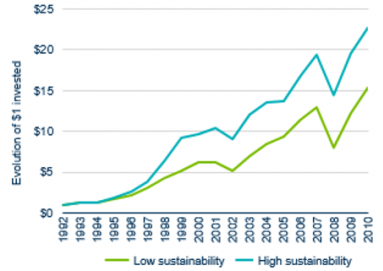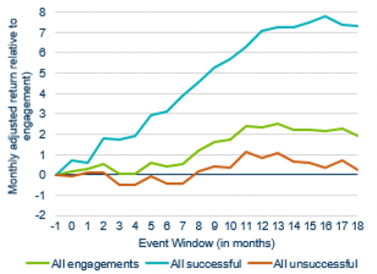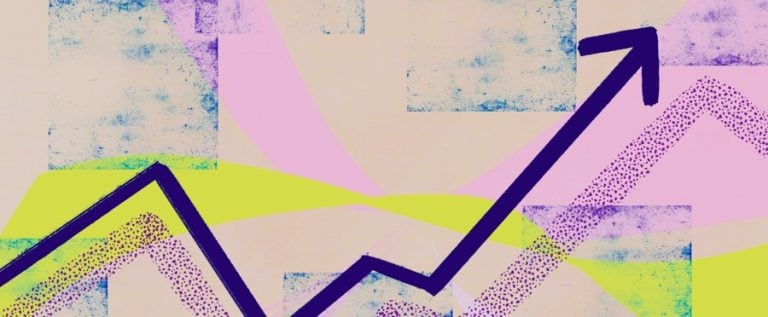The world is at a tipping point. Responsible investment, once seen as the preserve of niche green investors, is now mainstream under the rubric of environmental, social and governance (ESG) investing and stewardship. Federated Investors, Inc. (NYSE: FII) and Hermes Investment Management are challenging accepted investment dogma and clarifying the confusion about ESG and fiduciary duty at their symposium–ESG Investing and Stewardship: Risk-return, Conscience and Fiduciary Duty in New York today. The symposium will show how use of ESG factors to enhance returns and manage risk is consistent with fiduciary duty.
For more than 40 years, Federated has collaborated with fiduciaries to identify trends and issues relevant to sound fiduciary investment process and procedures. In recent years, Federated has detected a keen interest on the part of fiduciary clients to understand the implications of integrating ESG factors into an investment process subject to the fiduciary standard. Over the years, Federated has sought out academic experts to help fiduciaries understand legal issues raised by the use of various investment techniques.
Today’s symposium brings together Federated’s fiduciary thought leadership, Hermes’ ESG investing and stewardship expertise, and leading academic scholars to discuss the law and economics of ESG investing and stewardship by a fiduciary.
SRI v ESG
No investor, whether fiduciary or otherwise, should shy away from environmental, social and governance factors because they were previously connected to a socially responsible investing (SRI) approach. Professor Max M Schanzenbach, Northwestern Pritzker School of Law, and Professor Robert H Sitkoff, Harvard Law School, examined the role of ESG and fiduciary duty in their forthcoming Stanford Law Review article, Reconciling fiduciary duty and social conscience: The law and economics of ESG investing by a trustee.
Schanzenbach and Sitkoff:
“Many American trustees remain skeptical about the permissibility of ESG investing, probably owing to its association with the moral and ethical based practices of what had been called SRI. We clarify the umbrella term ‘ESG investing’ by separating it into two categories. ESG investing for moral or ethical reasons or to benefit a third party, what had been called SRI, is collateral benefits ESG. We refer to ESG investing for risk and return benefits—that is, to improve risk-adjusted returns—as risk-return ESG. And we show that risk-return ESG can be permissible under American trust fiduciary law.”
Schanzenbach and Sitkoff’s analysis, which differentiates between kinds of ESG investing based on motive, cuts through the noise and clutter in the marketplace by tracking the duty of loyalty under trust fiduciary law.
Dr. Saker Nusseibeh, Chief Executive, Hermes Investment Management:
“ESG is an attempt to understand all of the fundamental factors that you need to think about when making a long-term investment, hoping to make the best long-term return for your clients from that investment. ESG is part and parcel of long-term fundamental analysis and active management.”
Integration of ESG and active ownership
Hermes believes that there are two mutually reinforcing strands of responsible investment management: responsible investment and active ownership. Together, these aim to generate sustainable wealth creation for the end beneficiary investor encompassing both investment returns, and their social and environmental impact. Having been a vanguard of sustainable investing for more than three decades, Hermes integrates ESG and active ownership across its strategies, which deliver positive social and environmental impacts alongside investment returns.
The core objective of ESG integration is to improve long-term risk-adjusted returns, mitigate ESG risks and identify investment opportunities created or supported by positive ESG change. Responsible investing goes to the heart of investors’ needs, and Hermes believes that ESG integration and active ownership is relevant across asset classes, public and private, and for all investment strategies.
Nusseibeh continued:
“Not incorporating ESG into fundamental investment decisions exposes you to fat-tail risk. Who would not integrate an understanding of fat-tail risk when making an investment case? Moreover, investing for the long-term and leaving your investment in better shape than when you found it is vital. We need to think about the society and environment in which our savers and beneficiaries live. They will be spending the wealth that we create for them.”
Chart 1 'High Sustainability' firms generate higher returns over the long term

Chart 1 – Source: 2014 study by Eccles, Ioannou, and Serafeim investigated the effect of corporate sustainability on organizational processes and performance using a matched sample of 180 US companies
Chart 2 Engagement linked to enhanced financial performance

Chart 2 – Source: 2012 study by Elroy Dimsona, Oğuzhan Karakaşb, and Xi Lic analyses an extensive database of corporate social responsibility engagements with US public companies over 1999–2009 addressing environmental, social, and governance concerns.
As demonstrated in Chart 1 and Chart 2, not only have high sustainability companies generated higher returns over the long-term, but successful engagement can be linked to enhanced financial performance.
Hermes’ stewardship team, Hermes EOS, assists asset owners and asset managers to add long-term value to investments and manage their risks by engaging with companies and policy-makers on environmental, social, governance, strategic and financial issues. Active ownership by investors is essential to build a global financial system that delivers the opportunity for improved long-term returns on investment as well as better, more sustainable outcomes for society, in the interests of ultimate beneficiaries. Hermes believes that being an active owner and steward of capital when investing in companies will help to protect and enhance value by addressing developing problems with management and boards.
Dr. Hans-Christoph Hirt, Head of Hermes EOS, HIML:
“It is imperative to act as a responsible steward of investments through dialogue with boards and management, using your rights as investors and taking action where necessary. We anticipate a world where the power of effecting change through engagement with companies is front of mind for all owners. That is because, for us, the link between these topics and long-term value for companies and investors is clear.”
It is key that investors and asset owners recognize that by focusing on material sustainability factors, they can have a direct impact on the long-term success of companies. If fiduciary duty is to maximize the returns of long-term investments, investors and asset owners must take into consideration all of the factors that fundamentally effect the performance of the companies they invest in.
Nusseibeh concluded:
“Being good is good business. It’s that simple. The integration of ESG into the investment process, alongside stewardship, is the only way you can discharge your fiduciary duty. It would be foolish to deny future generations the benefits and prosperity that we have today. In a business context it means taking into consideration all stakeholders so the company is not being managed on a short term basis to benefit certain stakeholders today at the expense of stakeholders in the future, including employees, the environment and society.”
- High sustainability companies = those that voluntarily adopted sustainability policies by 1993. Low sustainability companies = those that adopted almost none of these policies
- Past performance is not a reliable indicator of future results.
- Engagements are followed by a one-year abnormal return that averages +1.8%, comprising +4.4% for successful and zero for unsuccessful engagements.







